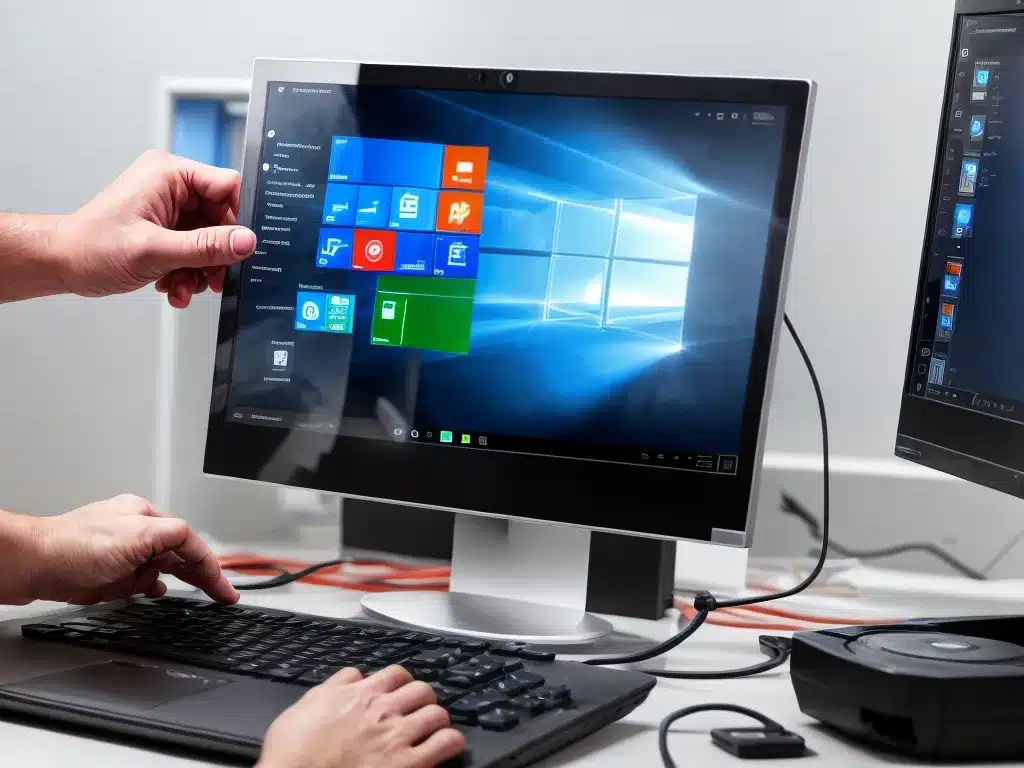
Reinstalling Windows is one of the most effective ways to boost the performance and speed of your computer. A fresh installation removes accumulated junk files, fixes corrupted system files, and gets rid of problematic programs. This comprehensive guide will walk you through the entire process to help me reinstall Windows and restore my computer to peak performance.
Why Reinstalling Windows Improves Performance
Over time, Windows computers inevitably slow down. Here are some of the main reasons why a Windows reinstallation speeds things up again:
-
Removes temporary files: Temporary files, browser caches, logs etc. accumulate over time, taking up disk space and slowing things down. A reinstall wipes them out.
-
Fixes corrupted system files: Important Windows system files can become corrupted through various issues. A reinstall replaces them with fresh copies.
-
Clears registry errors: The Windows registry can become clogged with invalid and obsolete entries. A reinstall allows the registry to be rebuilt properly.
-
Gets rid of malware and viruses: Malicious software can secretly run background processes that hog resources. Reinstalling Windows provides a clean slate.
-
Removes unnecessary programs: Unused programs that run in the background or load at startup drag down performance. A reinstall allows me to remove them.
-
Resets application configurations: Sometimes applications develop problems over time. Reinstalling resets all application settings to their original defaults.
-
Upgrades drivers: A reinstall provides an opportunity to update all drivers, which can resolve performance issues caused by outdated drivers.
Backing Up My Data
Before reinstalling Windows, it’s absolutely essential to back up all my important data. Here are a few ways to do this:
-
Copy important files to external media like USB drives, SD cards or an external hard drive.
-
Use cloud storage services like OneDrive or Google Drive to upload files.
-
Use Windows Backup to make a system image – this creates a snapshot of the entire system that can be restored later.
-
Back up browsers to save bookmarks, extensions and passwords.
Ideally, keep at least two copies of important data, with at least one copy off-site or in the cloud in case of hardware failure or other disasters.
Preparing for Reinstallation
Here are some things I should do to prepare my computer before starting the reinstallation process:
-
Write down license keys for any purchased software and games. This will allow me to reactivate them later.
-
Uninstall programs that came pre-loaded on my PC which I no longer need. This gives me a cleaner slate after reinstalling Windows.
-
Disconnect peripherals and external devices like printers and scanners. This avoids driver conflicts during installation.
-
Clear out disk space by deleting unwanted files, emptying the Recycle Bin etc. This will speed up the installation process.
-
Securely erase sensitive data using a wipe tool if needed. Don’t want confidential data recoverable after reinstalling Windows.
-
Update BIOS and drivers to latest versions for compatibility with the latest Windows builds.
-
Disable antivirus and firewalls temporarily during installation to prevent conflicts.
Reinstalling Windows
With preparations complete, I can now move on to reinstalling Windows. Here is an overview of the steps involved:
Boot from installation media
I first need to boot my PC from the Windows installation media. This could be DVD, USB or even network boot. I’ll need to select the boot device in BIOS.
Choose language, time settings
Early in the setup process, I’ll need to select my language, time/currency formats etc. Windows will detect my region and provide defaults.
Select Installation type
The main options here are:
-
Keep Files – Reinstalls Windows but retains my personal files and apps.
-
Keep Nothing – Completely erases everything and performs clean install.
I should choose Keep Nothing for best performance, after backups.
Accept license terms
I need to accept the End User License Agreement to proceed.
Select disk to install Windows
At this stage, I select the drive I want to install Windows on. Typically it would be the main C: drive. Advanced options like new partitions can also be done here.
Let installation complete
Windows will now install system files and configure settings. This may take a while, don’t interrupt the process.
Once done, I’ll be prompted to set up a user account and other preferences. After that, I’m all set with a freshly installed high-performance Windows system!
Post Installation Tweaks
Here are some additional tweaks I can do after reinstalling Windows to further enhance performance:
-
Update Windows and drivers to latest versions.
-
Tweak visual effects for best performance.
-
Change power settings to High Performance.
-
Disable unnecessary background apps and services.
-
Clean up disk using Disk Cleanup.
-
Set Windows Update to automatically install updates.
-
Reinstall must-have applications and games.
-
Restore backups to regain files and configurations.
With that, I can enjoy like-new performance on my rejuvenated Windows PC! Let me know if you have any other specific optimization needs.












